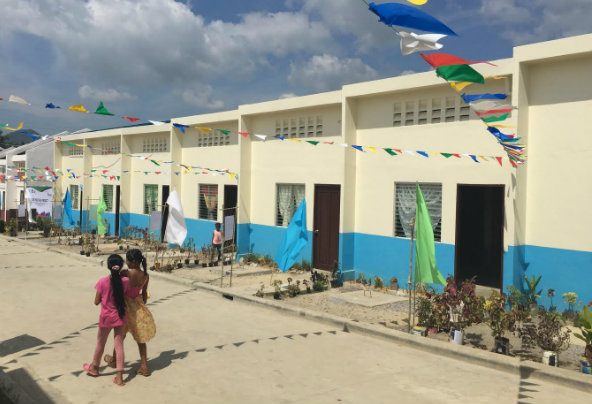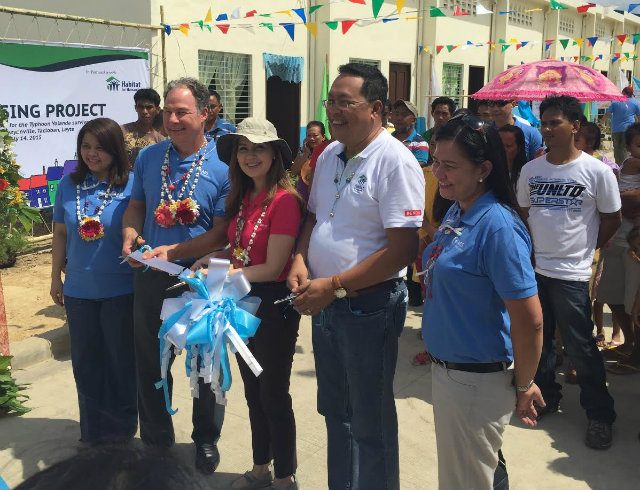SUMMARY
This is AI generated summarization, which may have errors. For context, always refer to the full article.

TACLOBAN CITY, Philippines — The government must change its current mindset about relocation and housing. It is an investment and not mere charity.
“Relocation and housing is a reduction of cost because every time we move people away from danger zones during disasters, the government is incurring huge amounts of money for it,” Habitat for Humanity Philippines managing director and CEO Charlie Ayco explained.
He used the experience in Typhoon Sendong in 2011 as an example. According to him, the government spent roughly P300,000 per family for the housing project built for the victims of the said typhoon.
For Ayco, if these victims were relocated before Sendong, the government could have offered them a part-loan, part-grant payment scheme, with part of the cost being shouldered by the target beneficiaries. The price could have been adjusted according to their income capacity.
Citing a study conducted by the University of Asia and the Pacific, he cited the impact of housing on job generation and taxation. Ayco also emphasized that housing is a very good pump-priming activity for the country’s economic growth.
“For every million that you spend in housing, you create 4.48 [million] jobs. For every peso invested in housing, the government gets P3.90 in indirect taxes. For every peso spent in housing, the economy turns around and moves 3.32 times, which is its multiplier effect.” Ayco said.
25 homes distributed to Yolanda survivors
The Applied Energy Services (AES) Corporation, along with its commissioned builder, Habitat for Humanity Philippines, distributed 25 housing units to the victims of Typhoon Yolanda (Haiyan) held last July 14 at Kawayan Ville in Barangay Sto Niño, Tacloban City.
“We realized the need for housing in Typhoon Yolanda. Habitat for Humanity has a great reputation and AES has worked with them elsewhere, that is why we were excited to work with them on this project. We saw the opportunity to help the victims. It may be a small thing but we thought that we could do something for the community,” said Kicker.
Kim de Leon of AES Philippines assured the public that plans for sustainability is an integral part of their housing project.
“This is going to be a well-planned community where the beneficiaries will have well-rounded programs for the inhabitants. We appreciated being partners with Habitat because they designed and conceptualized this community to be well integrated where there will be a day care center, sports facilites, a school, and even future efforts for livelihood opportunities,” De Leon said.

Typhoon-proof, low-cost housing
One important difference of this joint housing project lies in its structural design as it is an improvement of the government design prescribed by the National Housing Authority (NHA).
Instead of using metal roofing sheets, the top of the house is built on solid concrete roofing to guard it against strong winds.
“You see that this place is directly facing the Pacific and it is a given that they will always be hit by a strong typhoon. The first one that will be affected will be the roof so we used exactly the same size with the government design but we changed the roof and made it concrete. If it is not a concrete roof, what we do is to strengthen it and protect it with a paraffin wall,” Ayco said.
The height of each house is capable of accommodating a second level, giving the beneficiaries the flexibility of doubling the total floor size of their new home. With this, concrete roofing will regulate relative heat and humidity within the house, especially on the second floor.
AES Philippines allotted a total of P5 million for this project, bringing the individual unit cost to P200,000 for each house.
Rosalinda Montejo, one of the beneficiaries, expressed her heartfelt thanks to AES and Habitat for Humanity. She felt very blessed to have been chosen for this project and said she is now confident her family can finally move on in their life after being temporarily relocated in the transitional shelters.
“Mahirap sa transitional shelter kasi masikip, tapos wala pang kasiguruhan na mapapasaiyo ‘yung bahay. Marami ring conditions na kailangang sundin doon habang nakatira kami kaya masayang-masaya ako na makapagsimula na kami ng maayos na buhay nang dahil sa proyektong ito,” said Montejo.
(It was difficult to live in the transitional shelter because it was congested and we are not guaranteed ownership of the house. There were also conditions we needed to follow while were there, that is why I am very happy now that we can finally start our lives again because of this project.) – Rappler.com
Add a comment
How does this make you feel?
There are no comments yet. Add your comment to start the conversation.